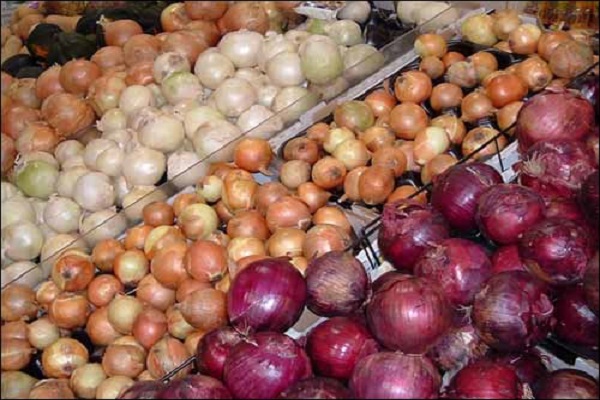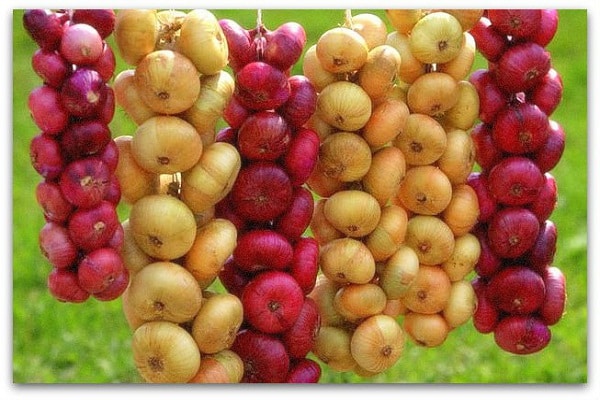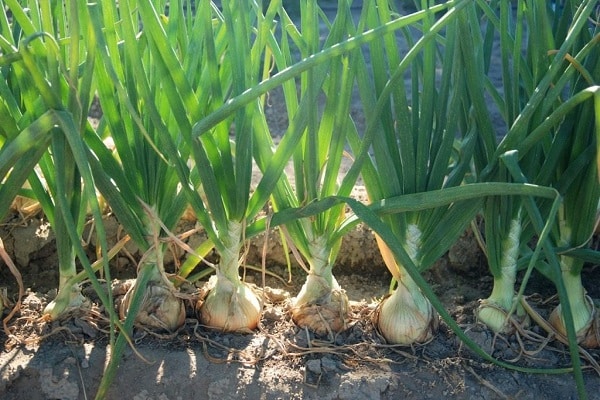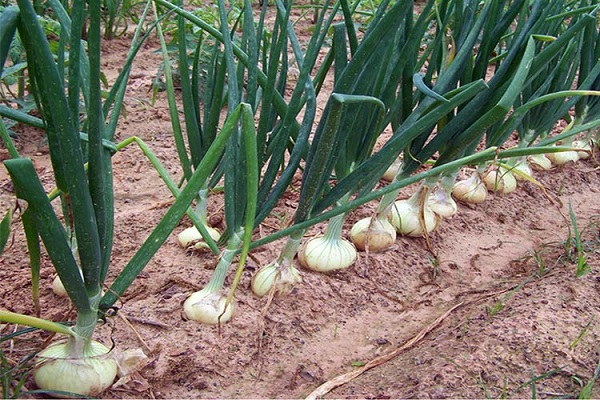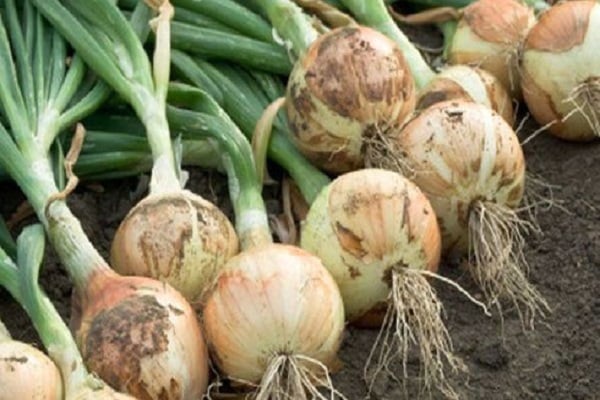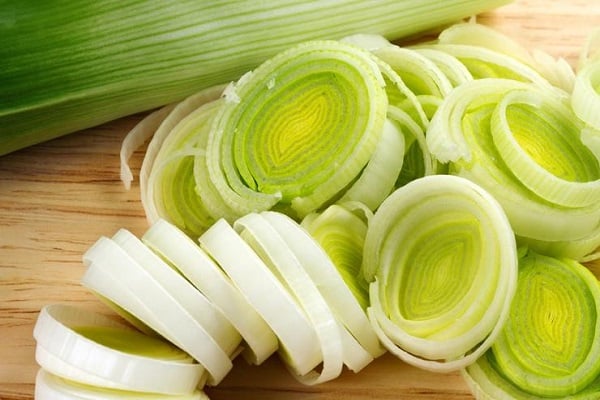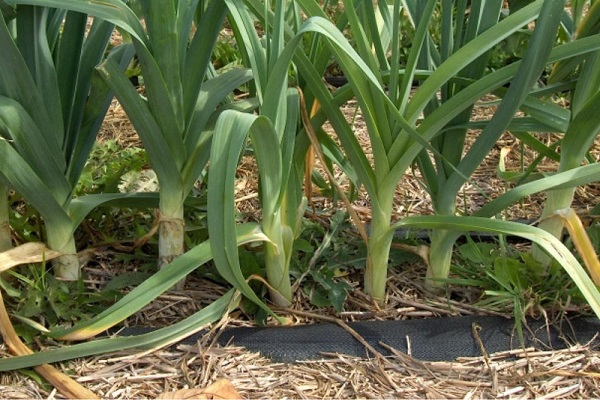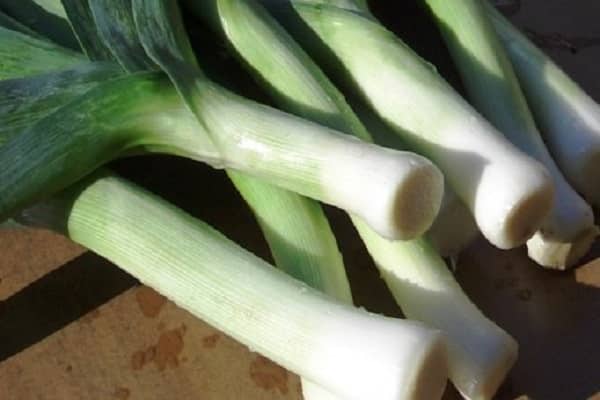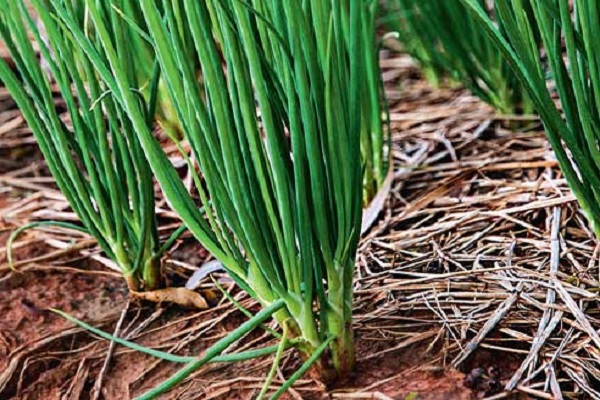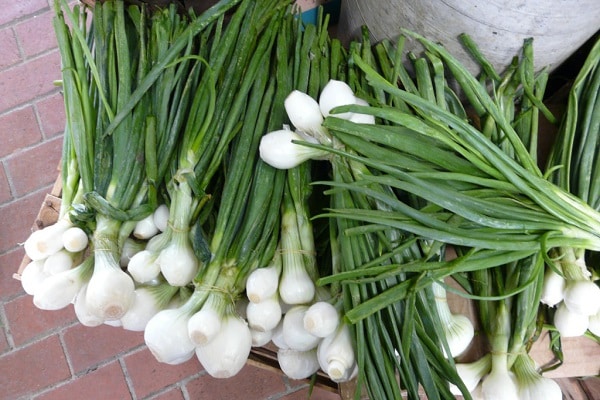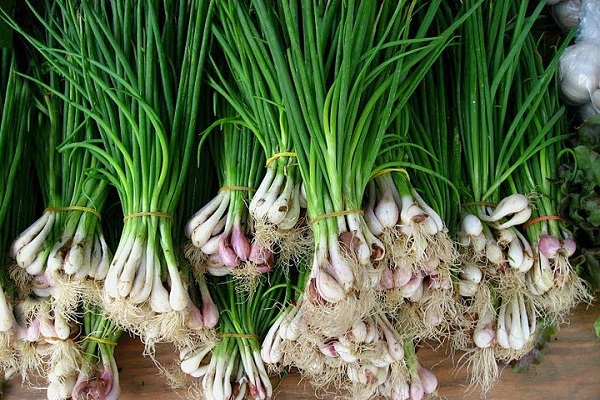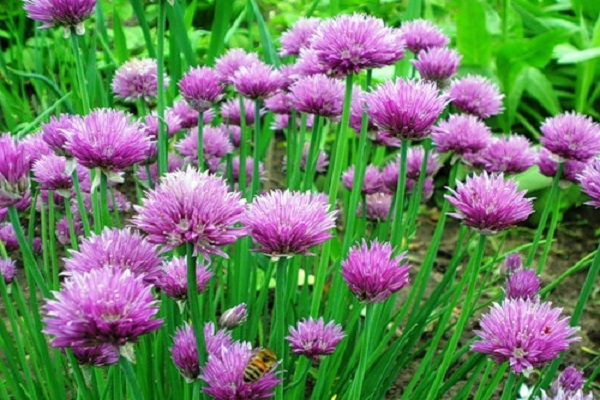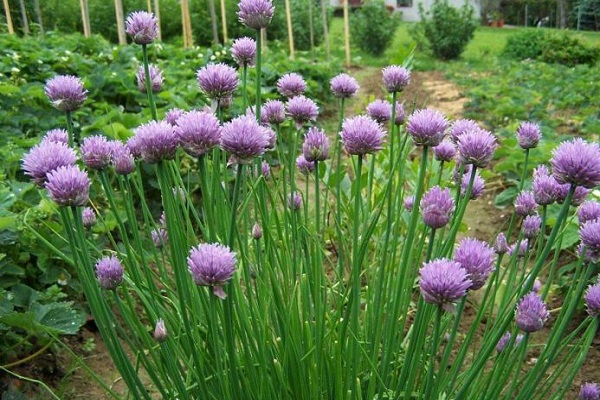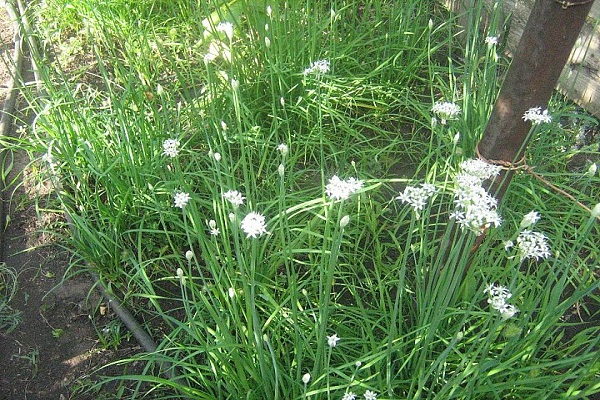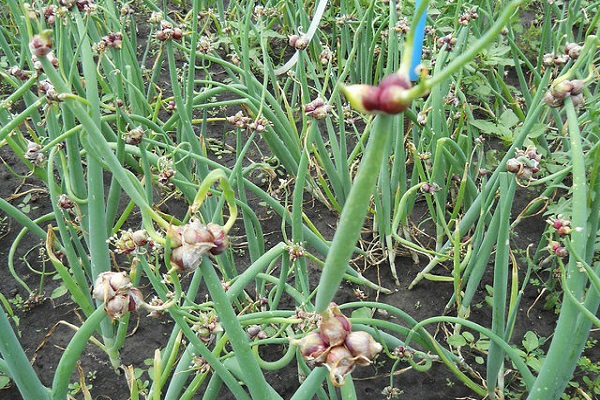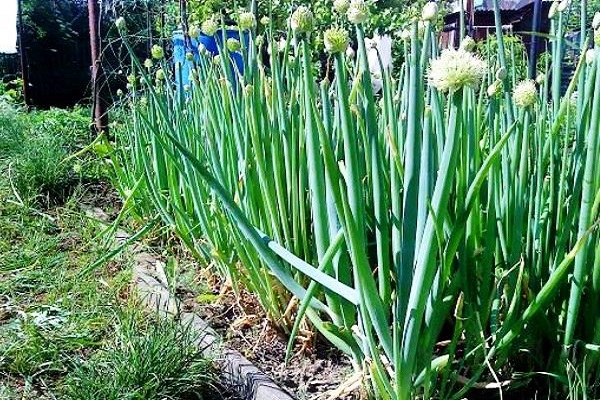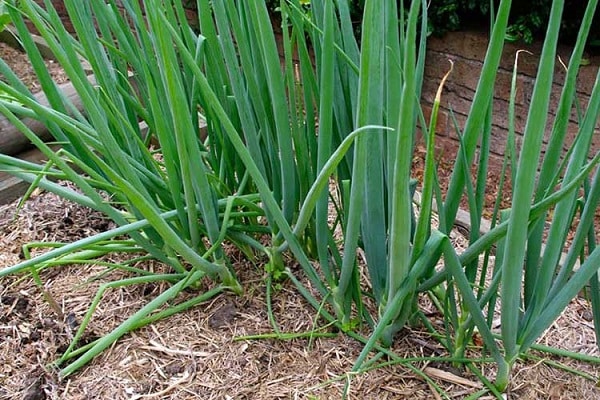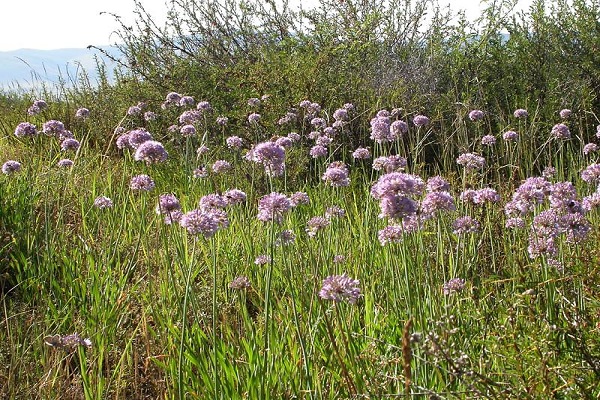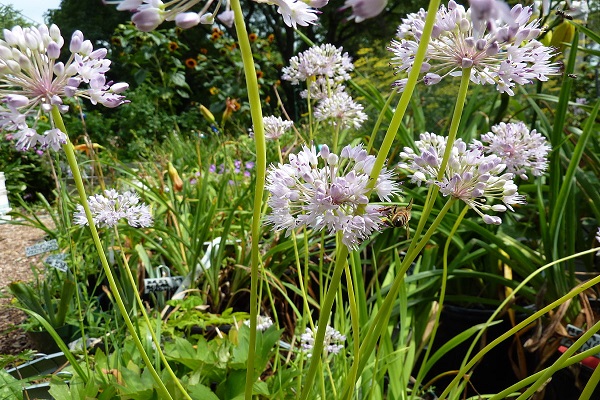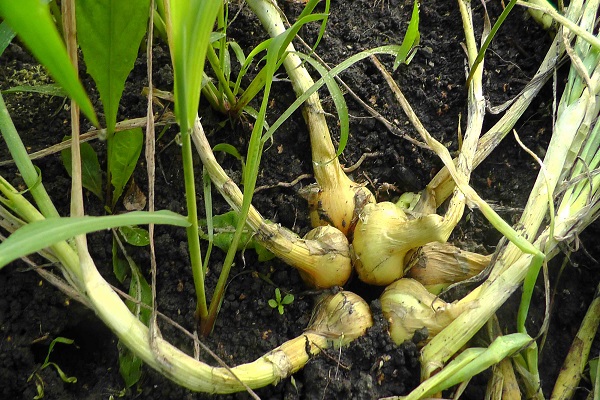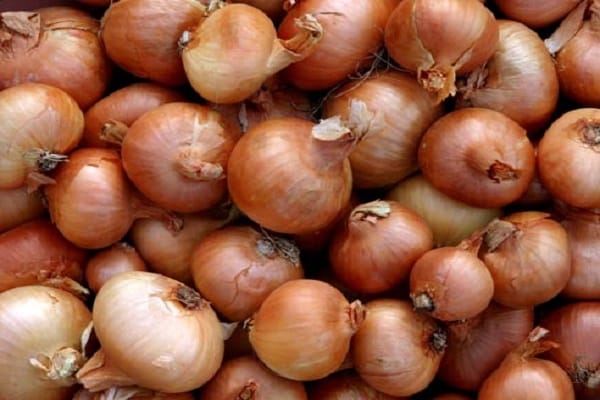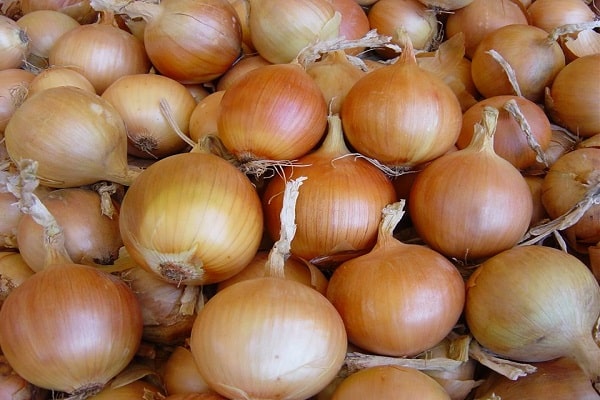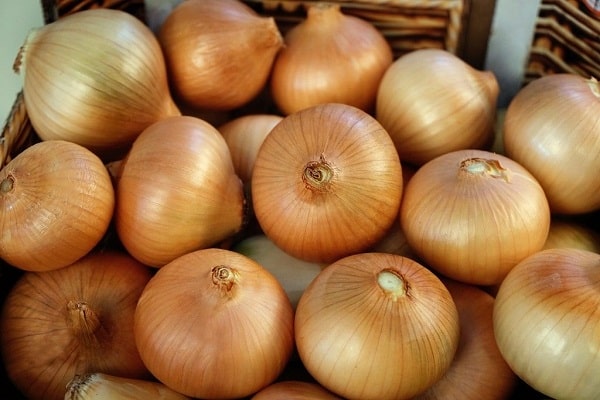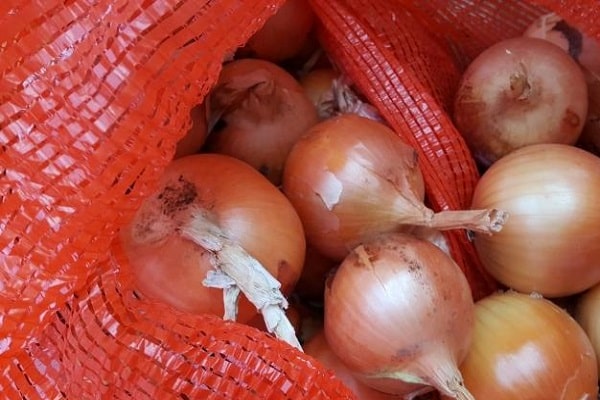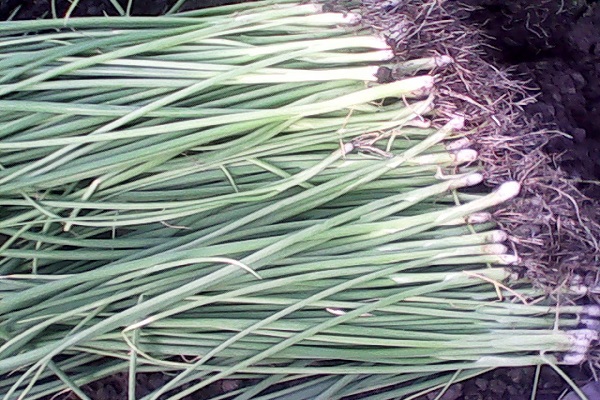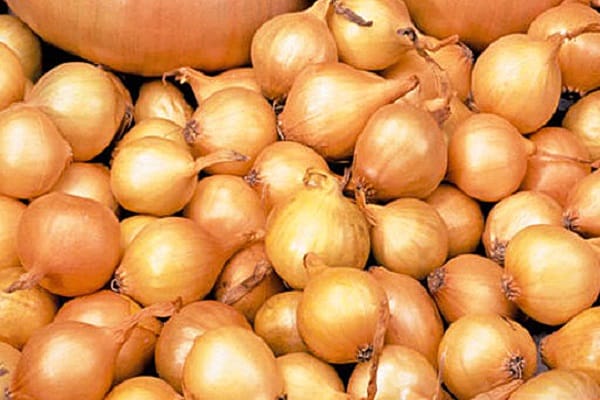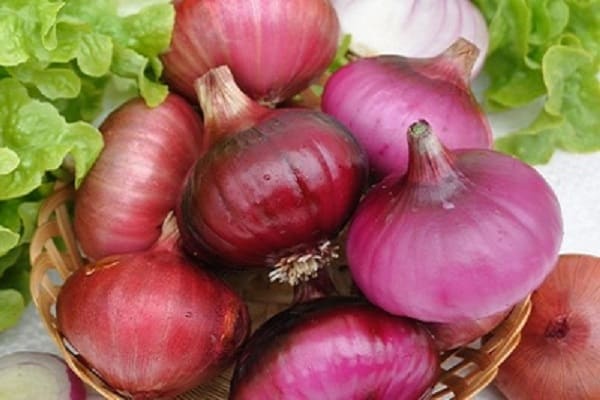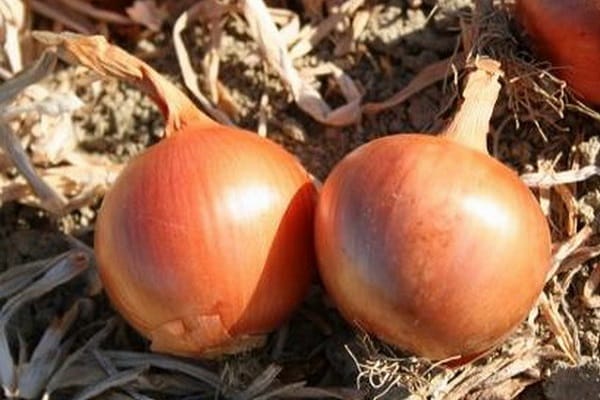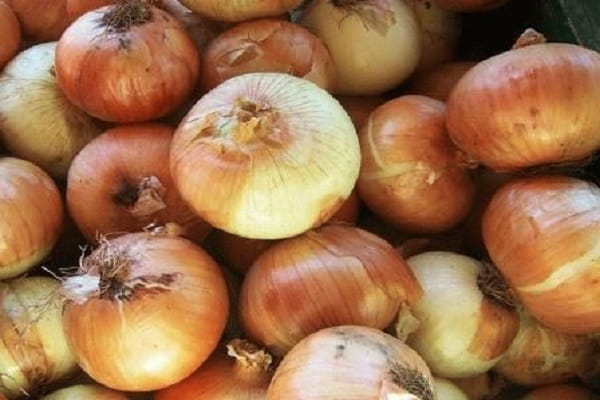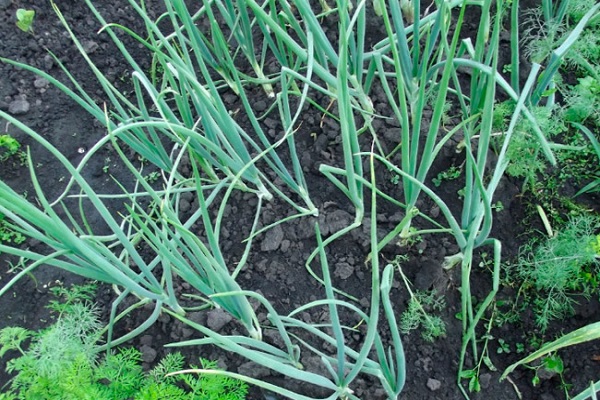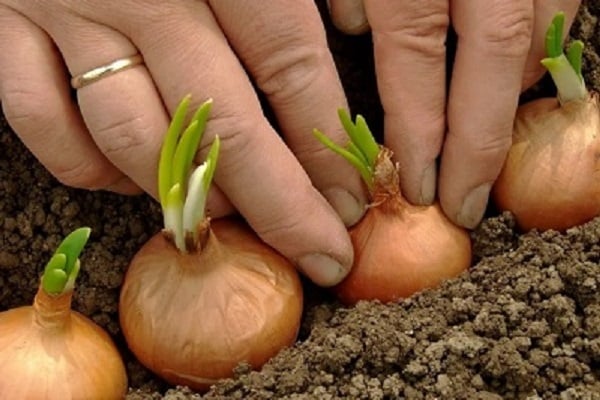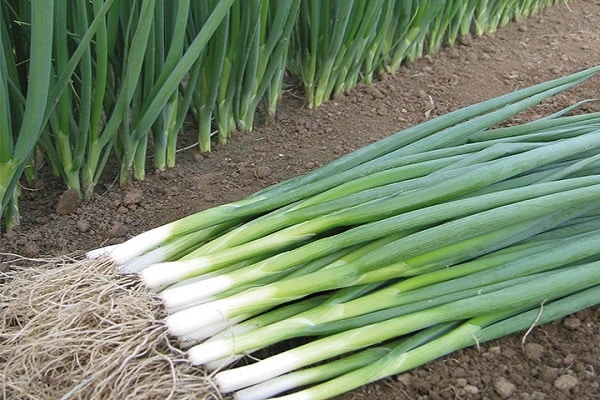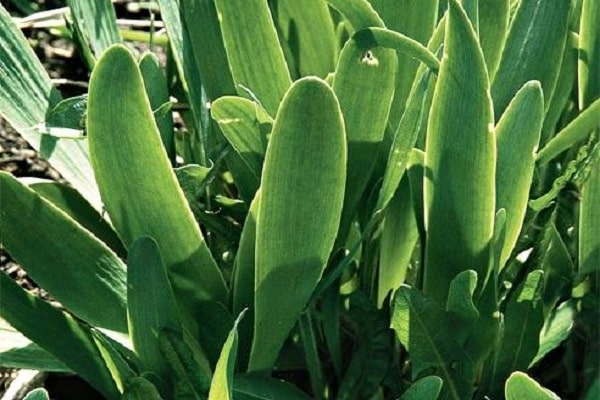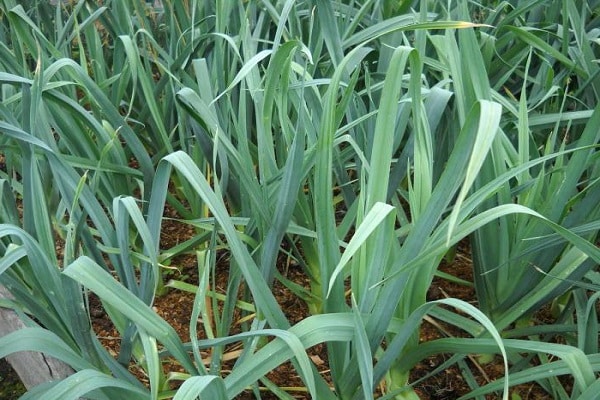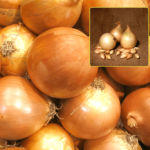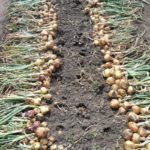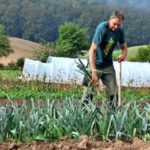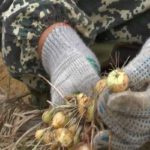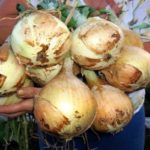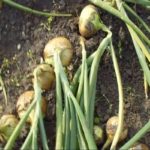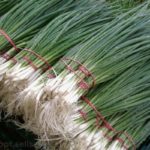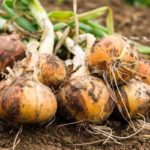The quality and quantity of the harvest depends on the correct choice of onion variety. When choosing it, you need to take into account the weather conditions of the region and the intended purpose of the vegetable. All types of onions differ in terms of ripening, shape, color and taste of the turnip, and how long the crop is stored.
From the history of onions
The cultivation of onions occurred about 4 thousand years ago in Asia.In Russia, they learned about this vegetable crop in the middle of the 12th century; since then, almost no dish can do without onions. The vegetable has medicinal properties and is widely used in folk medicine.
All varieties, such as onions, differ in growth, appearance, taste, and ripening time. There are about 900 varieties of onions, but only 220 species are grown on land. The most common types of onions: turnip, batun, shallot, leek, slime, branched, multi-tiered, chives, fragrant.
Varieties of onions
Varieties of onions according to the amount of essential oils and sugar:
- spicy varieties with a sugar content of 11%;
- semi-sweet onions contain 8% sugar;
- sweet varieties contain about 5% sugar.
The sweetest onion varieties contain the least sugar, but they also contain the least essential oils. It is essential oils that give the taste bitterness and pungency. Below is a list of onion types popular among gardeners with names and descriptions.
Onion
It is better to choose one that is low maintenance onion variety with good yield and long-term storage.
The best productive varieties include: Aleko, Zolotisty, Timiryazevsky. Early ripening varieties are: Carmen, Bogatyrskaya sila, Red Semko. Turnips from onion varieties do not lose their density and taste for a long time: Sturon, Orion, Stuttgarter.
Onions love fertile, loose soil with neutral acidity. It develops actively in good light and air temperatures above +15 degrees. The crop is particularly demanding when it comes to watering during the formation of the underground part. Suitable fertilizers include superphosphate, ammonium nitrate, and potassium salt.
Vegetables can be grown from seeds.Seeds - nigella - are planted in the prepared soil. Next year the sets will be ready. Onion seeds can be bought at the store or collected yourself. Black seeds are located in boxes on the arrows, which are released by the onion head after planting.
Before sowing, seeds are sorted, sorted, disinfected and germinated. In the prepared area, furrows are made at a distance of 20 cm. The seeds are deepened by 2–3 cm.
You can plant seedlings. For planting, heads no larger than 2.5 cm in size are selected. The sets are heated, disinfected and soaked in growth stimulants. As soon as the soil warms up to 10 degrees, the seedlings are deepened by 5 cm.
They begin to plant seedlings before winter when the air temperature drops to -3 at night. It is better to choose a sunny place, without stagnant moisture. The best varieties of onions for winter are: Ellan, Bessonovsky, Arzamassky, Chalcedony.
Care consists of regular watering, loosening the soil after watering and rain, weeding, fertilizing and treating against pests and diseases. The first feeding is carried out two weeks after planting. You can prepare a solution from chicken droppings. After another two weeks, a second feeding is carried out. The third application of fertilizer coincides with the period of active formation of the head.
Leek
Leek is a biennial herbaceous plant. Has a lot in common with onions. It is distinguished by the absence of a round bulb; long, wide leaves and stem are used for food. The length of the leaves can reach one meter.
All types of onions are divided according to ripening time. Early onion varieties begin to ripen after 140 days, mid-ripening ones after 165 days, late-ripening leeks can be harvested after 180 days or more.
Varieties of leeks that can be grown from seeds: Kamus, Bastion, Tango, Mercury, Bluewing, Vesta, Goliath.
The most common method is the seedling method of planting vegetables. Sowing of seeds begins in late February or early March. Adult seedlings are transplanted in mid-May. Leeks develop best in loamy soil. In autumn and spring, when digging up a plot of land, it is recommended to add humus or compost.
Caring for leeks requires careful and attentive care:
- watering should be abundant and regular;
- the soil should be loosened every week;
- hilling is carried out once every two weeks;
- in order to get a rich harvest over the entire growing season, it is advisable to apply at least two additional feedings;
- Be sure to destroy weeds in a timely manner.
The harvested crop is best stored with green leaves. This will allow the white stem not to lose its juiciness and nutritional components.
Shallot
The difference between shallots and the onion variety is the formation at the base of the nest of several oblong-shaped bulbs, small in size and a larger number of thin feathers. The taste of turnip pulp is sweet, without bitterness.
According to the ripening period there are:
- early ripening varieties: Cascade, Izumrud, Semeiniy, Jasper, Belozerets;
- mid-season types: Airat, Blondin, Kubansky, Bistro, Andreika;
- with late boundaries of bulb ripening: Krepysh, Siberian Amber, Ural Violet, Vonsky.
All shallot varieties are characterized by good disease resistance and drought tolerance. Shallots can be planted in spring and autumn. It is better to choose a sunny place for planting, with non-acidic, fertile, loose soil. Can be grown from seeds and bulbs.
After planting, the plant should be watered frequently and abundantly.It is recommended to apply fertilizer three times per season, the last application should be three weeks before harvest. In order for the vegetable crop to receive a sufficient amount of oxygen and nutritional components, it is necessary to loosen and weed the soil.
It is imperative to carry out preventive treatment against insect pests (onion flies and nematodes, worms appear most often) and diseases (powdery mildew, fusarium, and neck rot occur).
Chives
Before grow shallots, you need to get acquainted with the description of the variety. Oblong brown-white or purple-red bulbs are small, up to 20 pieces. They taste more tender, aromatic and sweeter than onion vegetables.
The aerial part consists of a false stem and numerous tubular, bright green leaves. Schnitt begins to bloom in the second year of growth, in May. In August, instead of flowers, a box with seeds is formed. Young leaves are used for food, which are cut 2-3 times per season.
A place for planting should be chosen that is protected from direct sunlight. The soil should be fertile and moist. Maintenance is standard and involves weeding, loosening, and fertilizing.
Popular varieties of chives are: Bohemia, Crocus, Albion, Honey plant, Siberian, Velta. They can be grown both in open ground and in a greenhouse.
fragrant onion
Alliums have long, flat, dark green leaves. The bulb does not form; instead, a long stalk with a diameter of 2 cm is formed. It tastes juicy with a garlicky flavor. The plant is named fragrant for the delicate aroma of its inflorescences.
The plant does not require special growing conditions, but grows well in loose, fertile soils with neutral acidity. Does not make any special demands on light and tolerates cold well.Leaf growth continues until snow falls.
In spring, new leaves appear in place of old leaves. Greens are used for food only in the second year of plant growth. It is cut three times during the season.
The fragrant vegetable can be propagated by seeds or by dividing the bush. Seeds begin to be sown at the end of April or before winter, at the beginning of October. It is better to divide the bushes in the spring. Popular hybrid varieties of fragrant onions: Fragrant, Aprior, Benefit, Zvezdochet, Piquant, Dzhusai, Vostochny.
Multi-tiered onion
What type of vegetable is there? The following varieties exist multi-tiered bow, which are known among vegetable growers: Gribovsky 38, Likova, Odessky winter, Memory.
The multi-tiered bow has an unusual appearance. Instead of inflorescences, large aerial bulbs, called bulbs, are formed on the tubular arrow. The plant forms several arrows with bulbs located at different levels. The leaves are juicy and pleasant to the taste, the bulbs have a slightly bitter taste.
The plant is characterized by high resistance to diseases and pests, is unpretentious and easy to grow. Tolerates drought and frost well. Both above-ground bulbs and the underground part can be used as planting material.
The soil on the site should be light, loose, breathable and fertile. To get a good harvest, you need to add fertilizer to the soil. Care consists of moderate watering, loosening the soil, weeding and timely application of fertilizers.
Onion
Salad onion is a perennial herbaceous plant. The bulb is formed small and not juicy, with thin scales. They do not store well in winter. Only tubular leaves and stems are used for food. The plant is characterized by excellent greenery with a pleasant, delicate flavor.Popular varieties are: April, Giant, Russian Winter.
Batun is very useful for the human body; the product contains a high content of vitamins, microelements, and essential oils.
To plant batun, you need to choose damp, but not swampy areas. First, the soil is dug up and organic matter is added. When growing an annual crop, sowing begins in early spring. To grow as a perennial plant, sowing is carried out in summer or autumn. The seeds are deepened by 1–2 cm.
After the emergence of seedlings, thinning is carried out, leaving a distance of 2.5 cm. When thinning again, the distance is increased to 6 cm. Otherwise, care is no different.
Aging Puchu Bow
Puchu onion is a wild plant that grows on gravelly slopes, in the mountains, and can be found in the steppes. Found everywhere in Mongolia, China, and Korea. In Korea, onions are grown for food. The juicy above-ground part is edible only in spring; in summer, the stem and leaves of the plant become coarser and acquire a bitter taste.
There are 4 types of Puchu:
- The European variety produces long, narrow and straight leaves.
- The Altai-Sayan species is distinguished by short straight leaves.
- The Transbaikal species can be recognized by its powerful bush and short, bent leaves.
- The Far Eastern species has long, spiral-shaped leaves.
The ripening period begins at the end of summer. By this time, the taste of the leaves acquires a pungent aftertaste. The bulbs are cut into rings, dried and added during the preparation of first courses.
Strigunovsky
Onion variety Strigunovsky belongs to the northern group of plants. For full development, it needs a daylength of 15–17 hours. The bulb is round, slightly elongated at the base, weighs 50 g, with a pungent flavor.The scales become yellow when ripe.
The turnip ripens early. The yield of the variety is high, it is well stored all winter, until the next harvest, and does not have any special care requirements.
Tenase
Tenaz onion seeds have average turnip ripening times. It takes 100 days to fully ripen. Dense bulbs weigh 90 g, the taste is semi-sharp. Their shape is round, their scales are golden-yellow. The yield is consistently high and the crop is stored for a long time.
Valentino
Mid-season hybrids include onions of the Valentino variety. The turnip is round in shape, dense, weighing about 110 g. The scales are brown, the flesh is white and juicy with a semi-sharp aftertaste.
Under good conditions, you can harvest a rich harvest, which can be stored for up to 5 months. The variety is resistant to adverse factors, high resistance to diseases, especially pink root rot.
Bessonovsky
It is worth getting acquainted with the description of the Bessonovsky onion variety, which has good characteristics. The bulbs are small in size, weigh 50 g, round in shape, slightly flattened. The pulp tastes sharp and piquant. The scales are golden yellow.
The harvested crop can be stored for up to 9 months, maintaining its taste and presentation. The variety is an early ripening crop; turnips can be harvested in late July. The plant is characterized by average resistance to disease.
Manas
It is recommended to grow Manas onion from seed as a turnip. The hybrid belongs to late-ripening crops. The bulb is round in shape, semi-sharp in taste, weight 90 g. The upper scales are brown. The pulp is white, juicy.
The yield of the variety is high, characterized by drought resistance and rarely suffers from fungal diseases. The harvest is suitable for long-term storage, while maintaining its taste and presentation.
Green banner
The high-yielding Green Banner onion has early fruit ripening. Type of onion: batun. The plant produces erect leaves up to 50 cm long, dark green in color with a waxy coating.
They retain their juiciness for a long time and do not become rough. Green leaves are frozen, dried and used in cooking. The variety is disease-resistant, especially resistant to fusarium and pink root rot.
Golden
The onion hybrid Golden Semko is recommended to be grown on turnips from seeds. The hybrid has an early ripening period, which lasts 73 days. A dense, rounded bulb weighing 90 g is formed. Dry scales are bright yellow. The taste of the white pulp is semi-sharp.
Taste and commercial qualities are preserved for 6 months. Good development is observed even with irregular watering and high air temperatures.
Danilovsky
The description of the Danilovsky onion variety notes high yield and good resistance to disease. Refers to the onion type of vegetable crop. Turnip ripening begins after 100 days. Dry purple scales. The taste of the light purple pulp is semi-sharp. The shape of the bulb is flat-round, weight 100 g.
Yellow dragonfly
A mid-season onion variety is Yellow Dragonfly with excellent characteristics. The period from germination to mass lodging of tops is 100 days. The bulb is small, round, slightly flattened. Dry scales are straw-yellow in color. The pulp has a sweet taste, the bulb weight is 60 g.
Sterling F1
The onion hybrid Sterling F1 is recommended for growing on turnips as an annual plant from seeds and as a biennial plant from sets. Belongs to a late-ripening, onion crop. Dry outer scales are white. The taste of the pulp is semi-sharp. Weight of a round onion is 120 g.Productivity is high.
Siberia F1
Onion Siberia F1 is recommended to be grown on turnips from seeds. Belongs to an early ripening crop. The white flesh has a semi-sharp taste. The bulb weighs 100 g. Dry scales are yellow-brown. It tolerates frost well, the variety is resistant to diseases and pest attacks.
Elan
Growing Elan onions from seeds does not present any difficulties. The round-flat bulbs ripen early, their weight is 110 g. The husk is yellow, the flesh is white. The taste is soft, sweetish.
The seeds are frost-resistant and germinate even at a temperature of +1 degree. Before winter, they are sown a month before the onset of frost. Bulbs will begin to form in mid-May. Juicy bulbs are collected in a mule; they are not stored for a long time.
Senshui
The description of the winter hybrid onion variety Senshui notes early ripening, frost resistance, high yield and disease resistance.
The plant reaches a height of 50 cm. The leaves are wide and dark green. The head is round, slightly flattened. The outside is golden yellow, the inner scales are white. Bulb weight 170 g.
Hybrid Kaoba
The Kaoba onion hybrid has an average ripening period. It takes 110 days from planting to ripening. Refers to the onion type of vegetable crop. The fruits are round with a smooth surface and yellow-brown in color.
The variety is characterized by high yield, long shelf life, and high resistance to diseases and pests.
Salad
Salad onions are easy to grow, do not require special care and take up little space. The vegetable crop grows quickly and is rarely susceptible to disease. All types of salad vegetables grow well in fertile, compacted soils. The harvest is stored for no more than 4 months.The bulbs contain many useful components.
Varieties of the salad group include: Exhibition, Yalta, Ermak. The pulp of the bulbs is juicy with a pleasant semi-sharp, piquant aftertaste.
Choose according to your taste
Each type and variety of onion is suitable for preparing individual dishes (salads, canning, stewing, baking). Growing involves going through the same stages. It is imperative to prepare planting material, choose a place for planting, regularly water the seedlings, apply fertilizers, loosen and weed.
When choosing a type of vegetable crop, attention should be paid to the ripening period, yield, and it is imperative to study the main characteristics: color, taste and size of the head, suitability of the leaves for food, and care requirements.
Vegetable growers have been choosing the Strigunovka variety for many years. The onion tastes sharp and juicy. The ripening period lasts 80 days. The harvest can be stored for a long time without losing its taste.
Golden onion Semko forms a large round head (weight 100 g) in a short time. The taste is semi-sharp. The harvest is stored perfectly for a long time. It is not affected by diseases and has high productivity.


